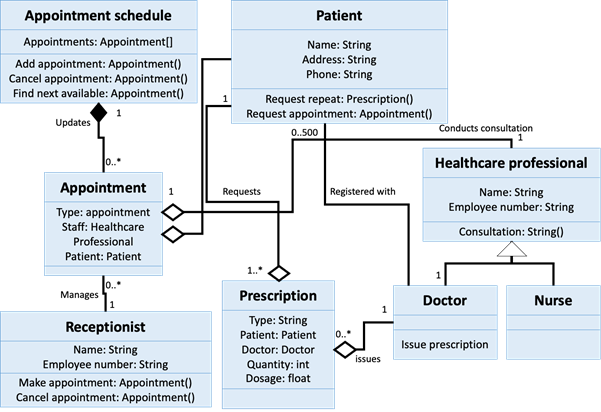Implementing Class Diagram with Python

Previously, I wrote a post about how to create a Class diagram from a given scenario. In summary, to design a class diagram is to understand the scenario wholly and then be creative about it. And then turn my extended imagination of the scenario, my justification and reasoning into a diagram.
Now, the new challenge is: how to make a program based on a Class diagram?

I was given this diagram as the scenario and asked to use Python to implement the diagram. In general, the steps I took are:
- Identify the relationship
- Create classes and their constructor first
- Create the method for each class
Identifying the relationship first rather than classes will helped me to measure the complexity of the program that I will create. Knowing its complexity will also help you in many other things, such as how you should organize the source code.
I ended up making one file for each classes, and keep them in a single folder. Keeping all the classes source code in a single folder helps me to efficiently manage the code. When I wrote the code, I had to go back and forth, switching from source to diagram. By isolating what I’m viewing in my code editor, I was able to focus and not feel overwhelmed by many lines of code. Although, the caveat is that the main.py, which the main code for the program, ended up being having so many imports.
I received several feedbacks from my lecturer. Two important things that I would like to mention is that:
- Code should be self-explanatory.
- The testing will be better if using the
unittestlibrary.
At first, I tried to understand what self-explanatory means. I googled and found what my lecturer meant.
In this blog post written by Kevin and this answer on StackOverflow by user ine, their arguments are pointing to the same thing: that code should be having no-comments at all, but people are still understand it. This doesn’t mean to not comment the code at all. Rather, there are several things that we can do first, before removing all comments from the code.
Kevin said that to make sure that the code is self-explanatory, the same logic should be tested in different ways: source code, documentation, and tests (unit testing). The reason why it is not enough to just do one logic test, Kevin shared a story where unit testing is 100% passed, but products the customer ordered are not delivered. The culprit was found after drawing a simple sequence diagram and bug fix is delivered.




Comments